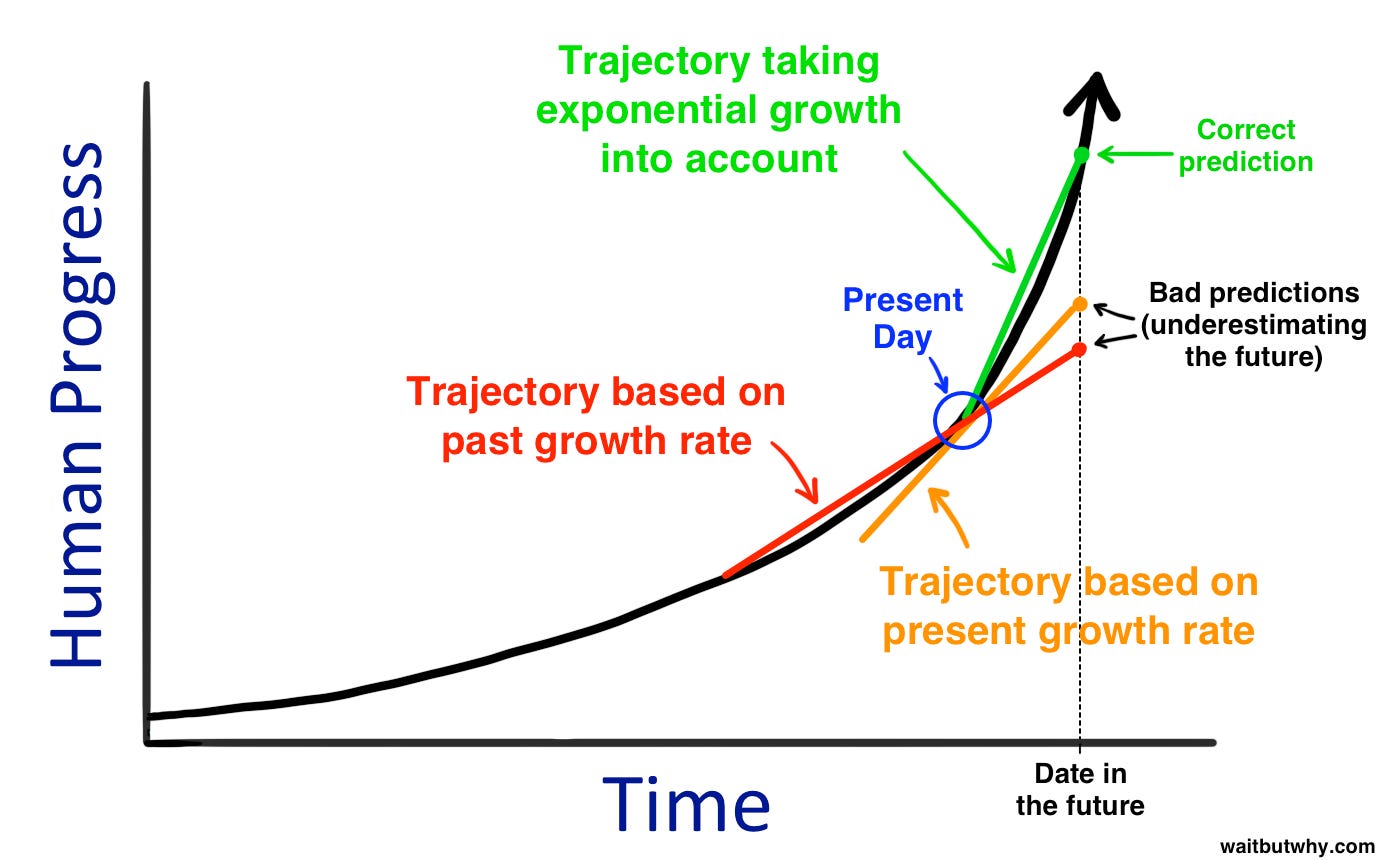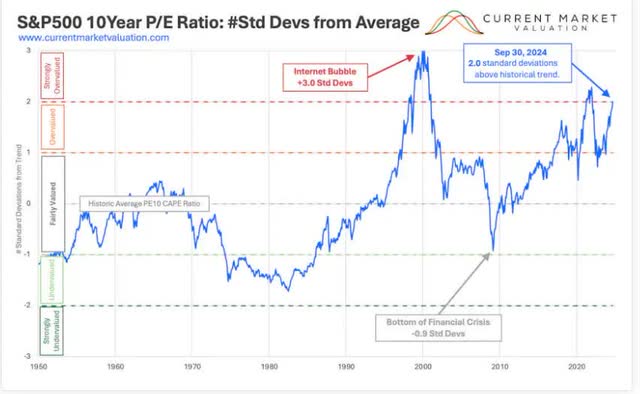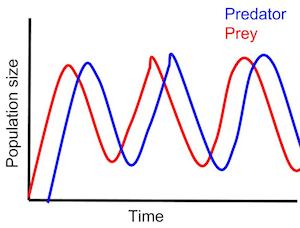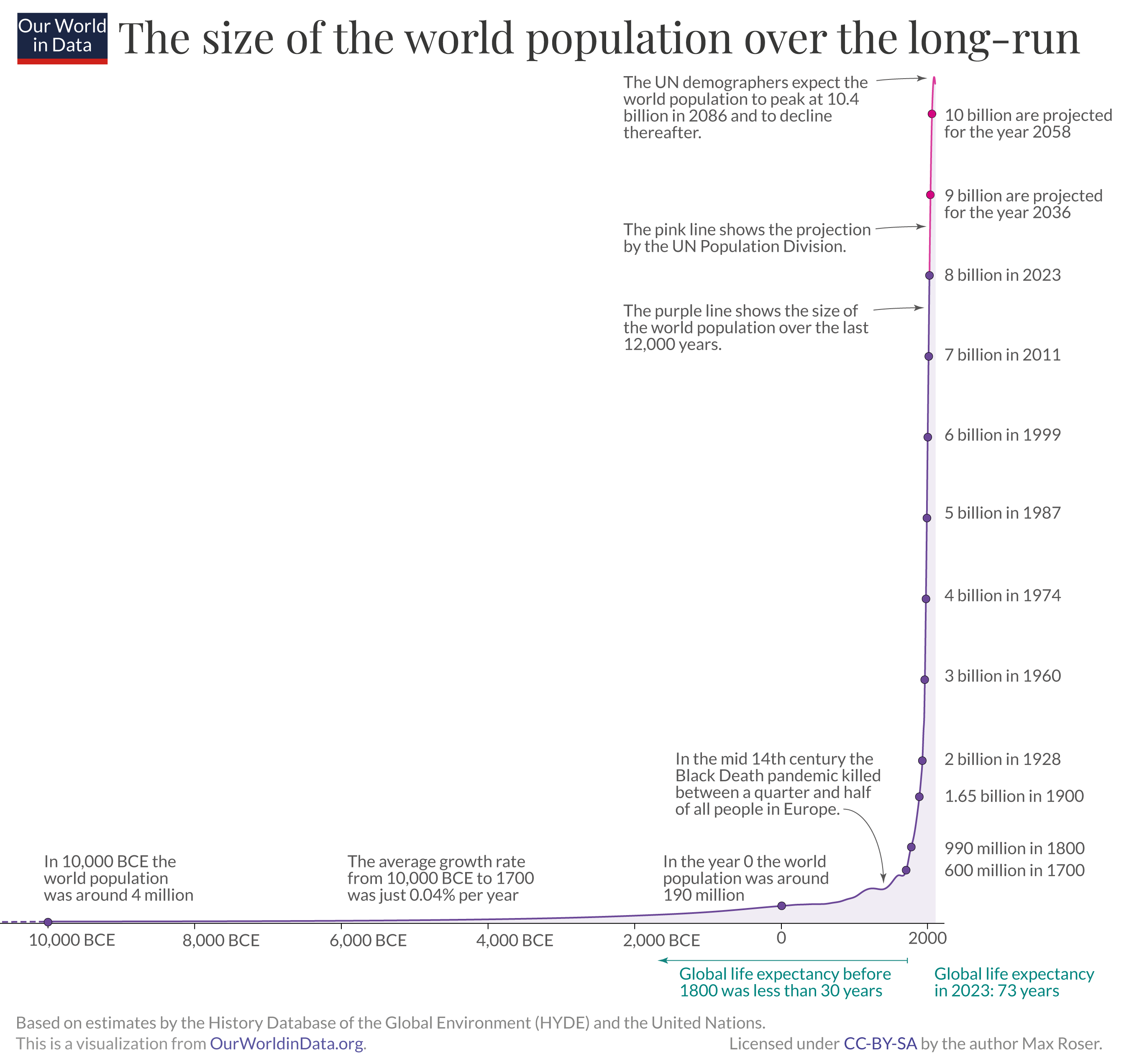Tremble Before the Mighty S-Curve
It’s a bitter pill to swallow. Nothing lasts forever. Everything must change and pass away. Things cannot stay the same.
Guess what else can’t stay the same? Change itself. I see a lot of pro-progress techno-optimist folks high-fiving about our rosy future. The rate we are innovating at is unprecedented. When you graph the wealth of humanity over time you have to start at the Second Industrial Revolution or else it is just a bizarre L shape.

I once saw a meme (I looked for it for hours but couldn't find it) that had a little speech bubble at the end of the graph that said something along the lines of "I know what is normal. The future is predictable from the present." The intent of the meme is obviously to mock that mindset. You are stuck on a technological rocket ship pointed directly up! Such is the nature of exponentials. All shall quake before the great and terrible exponential.

I’m suspicious of this argument. Naïve exponential functions are cool but there are many things they should never be used to model, because any sort of exponential growth that involves matter or energy cannot remain exponential for very long. If we were to extrapolate the rate of growth during the past two centuries forward into time then we’re going to consume every resource and joule in our local group in a shorter amount of time than Christianity has been around. There is some asymptote lurking up there that will decrease the slope just as fast as it has increased. Every time someone points at an exponential curve, they’re actually pointing at an S-curve that hasn’t topped out yet.
Population growth, in the best case, is an S-curve. Global wealth, lifespans, and all the other graphs we like to look at and pat ourselves on the back for how well we’ve done in the modern era—they’re all eventually going to stop looking like an L and start looking like an S.

The implications of the S-curve keep me up at night. Everybody who is currently alive has lived in the era of humanity where this level of growth is simply taken for granted. Most levelheaded financial advice you can find essentially boils down to “invest in index funds and be patient”. It makes sense that the prior generations feel so optimistic about ETFs because they’ve seen the market recover from every recession, winter, crash, etc. and rally to new unprecedented heights. But stock prices are bets on future growth. It’s basically irrelevant that they’re an enormous tech company moving around tens of billions of dollars every year if they aren’t anticipated to move yet more tens of billions the next year. The disparity between the price of a share of a company vs the earnings per share is called the P/E ratio. It shows how optimistic (i.e. overvalued) the market really is. Though there has been a major correction in Q1/Q2 of 2025 due to the tariff drama, the market is still frightfully overvalued.

It is possible for earnings to catch up with price, but that requires the prices to either stay the same (so putting all of your money in the S&P 500 isn’t a viable retirement plan any more) or for the earnings to grow at such an increasingly speedy rate that it justifies the high price. And now we’re just back to blind faith in the exponential.

The spooky part about S-curves that look like exponentials is that it is essentially impossible to tell which part of the S you are on. Perhaps everything I’m saying about the inevitable slowdown is completely irrelevant to us because it’s thousands of years of hypergrowth away, and running out of resources is going to look more like Foundation than Hunger Games. On the other hand, there might be some secret asymptote lurking less than one human lifespan away. Ecological chaos. Climate change. Birth-rate collapse. Oil wells running dry. A global hot war that is less like a destructive but ultimately regulating volcanic eruption (WWII) and more like a mass extinction event (WWIII with nukes). I don’t know which one is most likely, so maybe I should just shut up. Yet I can’t shake the feeling that we can’t go on as we have been.
Despite what the highly leveraged investors would like you to believe, we’re not going to spontaneously combust if the infinite growth machine stops. Despite what the degrowth hippies would like you to believe, we in the West are not at all psychologically ready to live in a world where the infinite growth machine is turned off, nor are we agentic enough to overcome societal inertia to correct our course barring some violent wake-up moment.
I feel torn between spending energy optimizing for thriving under the current system (building my retirement funds, getting a mortgage, advancing my career, nurturing my hobbies) and building skills to thrive under a more primitive system (stockpiling resources, learning horticulture, animal husbandry, self defense, food preservation). This is a zero-sum competition for my time, spending effort on one will necessarily detract from the other. And I wouldn’t want people to point and laugh at me and call me a doomsday prepper. Also I literally have nowhere to stockpile anyway, I live in a tiny two-bedroom apartment on the third floor.
So there’s a dose of anxiety for you just in case you were feeling chilled out for some reason. Of course it’s possible none of this will come to fruition. Maybe we’ll solve scarcity such that we can exist in a happy and stable state for a long while yet, or the asymptotic reckoning is more than a lifetime away and we can simply put it out of our minds like the previous generations have.
One last parting thought. Remember how I said that population growth is an S-curve in the best case? If you look at actual populations of non-humans you’ll find an even more distressing function that starts with “s”, the dreaded sine curve.

Here’s another L-shaped graph for you:

I’ve been told that whenever the slope has gone negative it wasn’t a pleasant time to be alive.